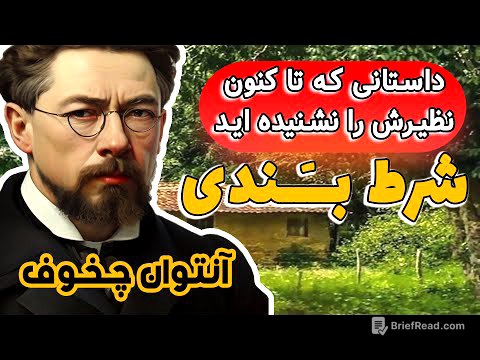TLDR;
This article discusses Ryan Williams' groundbreaking proof regarding the relationship between time and memory in computation, a milestone that has stunned the computer science community. Williams' work establishes a mathematical procedure for transforming any algorithm into a form that uses much less space, implying a second result about the limits of computation within a certain time frame. This breakthrough could offer a new way to approach one of the oldest open problems in computer science, potentially revolutionizing the field.
- Williams' proof demonstrates that memory is more powerful than previously believed, with a small amount being as helpful as a lot of time in computations.
- The result has implications for both what can be computed with limited space and what cannot be computed within a certain time.
- Williams' approach involves a novel simulation technique based on the concept of "squishy pebbles," challenging long-held assumptions about memory usage in algorithms.
[Ryan Williams' Discovery]
In July 2024, Ryan Williams, a theoretical computer scientist at MIT, validated his startling discovery about the relationship between time and memory in computing. His proof suggested that a small amount of memory could be as effective as a significant amount of time in computations, a concept initially deemed improbable. After months of refinement and peer review, Williams posted his proof online in February, receiving widespread acclaim for its potential to transform algorithms and challenge existing computational limits.
[The Significance of Time and Memory in Computation]
Time and memory are fundamental resources in computation, with algorithms requiring both to run and store data. Williams' proof introduces a mathematical procedure to transform algorithms, reducing space usage significantly. This breakthrough implies limitations on what can be computed within specific timeframes and offers a novel approach to a long-standing problem in computer science.
[Williams' Background and Early Interest in Computing]
Ryan Williams, now 46, developed an early fascination with computers growing up on a farm in rural Alabama. His interest was sparked at age 7 by a simple program that generated a digital fireworks display. This early exposure led him to explore the theoretical side of computer science, particularly computational complexity theory, which deals with the resources needed to solve computational problems.
[Juris Hartmanis and the Definition of Computational Resources]
Juris Hartmanis, a pioneering computer scientist, played a crucial role in defining time and space in computational terms. Overcoming hardships in his early life, Hartmanis immigrated to the United States and, along with Richard Stearns, established mathematical definitions for time and space, enabling researchers to compare these resources and categorize problems into complexity classes.
[The P vs. PSPACE Problem]
The relationship between the complexity classes "P" (problems solvable in reasonable time) and "PSPACE" (problems solvable with reasonable space) is a central question in complexity theory. While every problem in P is also in PSPACE, theorists suspect that PSPACE is much larger, implying that space is a more powerful computational resource than time. Proving this requires demonstrating that certain problems in PSPACE cannot be solved by fast algorithms.
[Early Attempts to Link Time and Space]
In the early 1970s, researchers at Cornell University, led by Juris Hartmanis, attempted to establish a precise link between time and space. John Hopcroft, Wolfgang Paul, and Leslie Valiant devised a universal simulation procedure that saved a bit of space, transforming algorithms to use slightly less space than their original time budget. However, progress stalled due to the assumption that different data chunks cannot occupy the same memory space simultaneously.
[Williams' Academic Journey and Persistence]
Despite facing challenges and initial rejections, Williams pursued his passion for complexity theory. He was admitted to Cornell University and, with guidance from Juris Hartmanis, cultivated an individual approach to complexity research. Despite initial setbacks in graduate school applications, Williams' persistence and research experience led to success and a continued focus on complexity theory.
[The Breakthrough: Squishy Pebbles]
Williams' new result originated from progress on the question of what problems can be solved with extremely limited space. Inspired by the work of Stephen Cook and his collaborators on the tree evaluation problem, Williams realized that the method of "squishy pebbles"—allowing data to occupy the same space in memory—could be a general-purpose tool for reducing space usage. This led to a new universal simulation linking time and space, surpassing previous limitations.
[The Impact and Implications of Williams' Simulation]
Williams' simulation transforms algorithms, making space usage much smaller, roughly equal to the square root of the original algorithm's time budget. This breakthrough challenges the assumption that it was impossible to improve upon previous universal simulations. The result has significant theoretical implications, although it may not have immediate practical applications due to the increased slowness of the new algorithm.
[Reactions and Recognition]
The publication of Williams' paper online surprised and impressed the computer science community. Researchers like James Cook and Ian Mertz, whose work inspired Williams, were astonished by the implications of his findings. Leslie Valiant, who had contributed to earlier work on the problem, was also deeply impressed by Williams' improvement, recognizing it as a significant advancement in the field.
[PSPACE: The Final Frontier and Future Directions]
Williams' new simulation has proven a positive result about the computational power of space and a negative result about the computational power of time. While it may not directly solve the P versus PSPACE problem, it establishes a quantitative gap between the power of space and time. Future research may focus on modifying Williams' simulation procedure to widen this gap further, potentially leading to progress on other problems in complexity theory.









